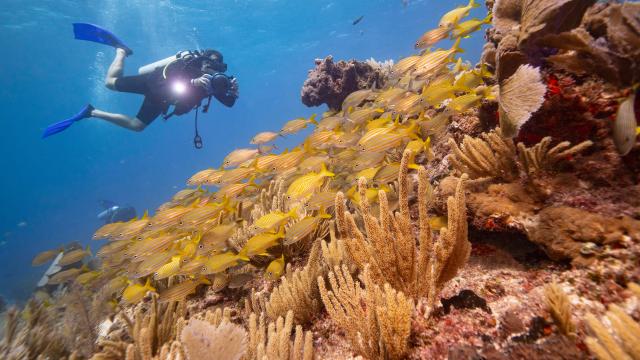Coral reefs are facing a crisis thanks to an ever-growing list of threats, from climate change to ocean acidification to pollution. In an effort to stem the rising tide of damage, the National Academy of Sciences released a major report on Wednesday chronicling the high-tech interventions we might have to use to save coral.
None of the solutions are close to ready for primetime, but the fact that the premiere scientific research institution in the U.S. is talking about them shows the urgency of the problem.
“We’re losing reefs so fast,” Coral Reef Watch program manager Mark Eakin told Gizmodo. “It is so critical that we do everything we can to keep coral reefs alive and healthy.”
There are two main avenues to save coral outlined in the report, which was commissioned the National Oceanic and Atmospheric Administration (which itself oversees Coral Reef Watch). One level is focusing on engineering the coral themselves. Research has been ongoing on this front for years as scientists seek to unlock the secrets of so-called super corals that can survive in hot water that causes other corals to bleach and die, or acidic seas that dissolve reefs.
But the report also calls out more wild interventions including freezing coral embryos and sperm in an effort to preserve biodiversity, and thawing them out in a future, hopefully cooler climate. The report notes that scientists have successfully done this with 16 species of coral, but the risks remain high that the freezing process could damage their delicate cells.
The other avenue to preserve coral is to somehow protect reefs themselves at a macro scale. That delves into the science fictional realm of geoengineering. Some ideas that have been put forward and even tested on a small scale include pumping up cooler water from the depths of the ocean, creating artificial shades to cool surface water itself or altering the chemistry of seawater to make it less acidic. The latter includes natural solutions like planting seagrasses as well as more out-there ideas like electrochemically splitting calcium carbonate to make the ocean more alkaline.
The National Academies report is one of the most comprehensive syntheses of all the disparate methods that could help save reefs. A follow-up report will create resources for actually implementing some of these ideas in the real world to start to turn the coral death spiral around.
Coral reefs have declined 30-50 per cent in all corners of the ocean since 1980, a period that has seen three global coral bleaching events driven by hot seas. Those events will only become more common as the planet warms, meaning considering these types of interventions isn’t just for fun.
It’s literally life and death for coral as well as the millions of people who rely on reefs for food, protection from storm surge, and their livelihoods. But the interventions are far from the only solutions needed to keep reefs around.
“This is by no means supposed to replace efforts that are occurring to reduce the level of carbon dioxide and other heat-trapping gases in the atmosphere,” Eakin said. “It’s not supposed to replace local actions to protect reefs. This is what you do to repair and keep reefs alive despite. It’s far cheaper and easier to deal with the threats and reduce the chances that damage will occur than it is to rebuild the ecosystem.”
